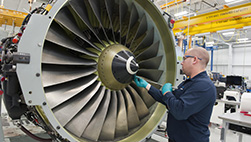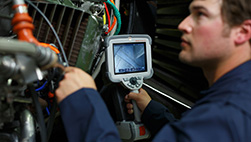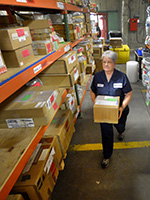By JASON DICKSTEIN
The FAA really is trying to make it easier for industry to use safe aircraft parts. I have been writing blog articles about the FAA’s problems with the 8130-3 (Airworthiness Approval Tag), but relatively little press has been given to the FAA’s efforts to make the 8130-3 tags better. A recent policy memo from the FAA actually removes unnecessary distinctions and makes it easier to use the 8130-3 tag in parts transactions.
On June 28 the FAA issued a policy memo (AIR100-16-110-PM04) that forbade parties from stating ‘domestic shipment only’ or “not an export approval” on the 8130-3 tag:
“This memorandum provides clarification on the use of ‘domestic shipment only’ and ‘not an export approval’ in block 12 of FAA Form 8130-3 (hereafter, tags). Inspectors, designees, delegated organizations, and persons authorized in accordance with a production approval holder’s approved quality system to issue tags are directed to not add ‘domestic shipment only’ and ‘not an export approval’ to block 12.”
This export-specific language tended to impede subsequent exports. Many people mistakenly thought that this language was meant to prevent a subsequent export. The FAA has removed the export-specific language because it found that the language impeded commerce without adding any safety value.
History
Use of this sort of export-specific language ignored the original purpose of the ‘domestic tag.’ It was originally meant to create a kludge that made 8130-3 tags available to exporters – at a time when the regulations limited access to the traditional export tag. It was called a ‘domestic’ tag because it only certified compliance to domestic US standards, and not to any special import requirements of an importing nation.
Years ago, exporters (who were not the manufacturer) were unable to obtain an export tag for parts. The reason for this began in 1963, when the FAA published a Notice of Proposed Rulemaking (NPRM) to establish the rules for export airworthiness approvals (Subpart L of 14 C.F.R. Part 21). They classified the world of aircraft assets into three classes:
(1) A Class I product is a complete aircraft, aircraft engine, or propeller, which:
(i) Has been type certificated in accordance with the applicable Federal Aviation Regulations and for which Federal Aviation Specifications or type certificate data sheets have been issued;
or
(ii) Is identical to a type certificated product specified in paragraph (b)(1)(i) of this section in all respects except as is otherwise acceptable to the civil aviation authority of the importing state.
(2) A Class II product is a major component of a Class I product (e.g., wings, fuselages, empennage assemblies, landing gears, power transmissions, control surfaces, etc), the failure of which would jeopardize the safety of a Class I product; or any part, material, or appliance, approved and manufactured under the Technical Standard Order (TSO) system in the ‘C’ series.
(3) A Class III product is any part or component which is not a Class I or Class II product and includes standard parts, i.e., those designated as AN, NAS, SAE, etc.
This three-part distinction can be found today in older versions of the Code of Federal Regulations. But this distinction no longer exists in the modern regulations.
The original 1963 NPRM (Nnotice of Propose Rule Making) suggested that export airworthiness approvals would be available for Class I and Class II products. It explained that export airworthiness approvals would not be necessary for Class III products, and that exporters could self-certify airworthiness with respect to those units. This dramatically limited the impact of the proposed rule, because most articles fell into class III.
During the comment period for this new rule, a manufacturer wrote to the FAA and said that it could foresee a possible need in the future to apply for Class III export airworthiness approvals for its own articles. The stated purpose of the rule was to facilitate trade, so when the Final Rule was published in 1964, the FAA added a clause stating that manufacturers could also apply for Class III export airworthiness approvals in order to meet the request of the commenter. No one was asking for these tags for piece-parts, so there was no objection to the additional permission.


